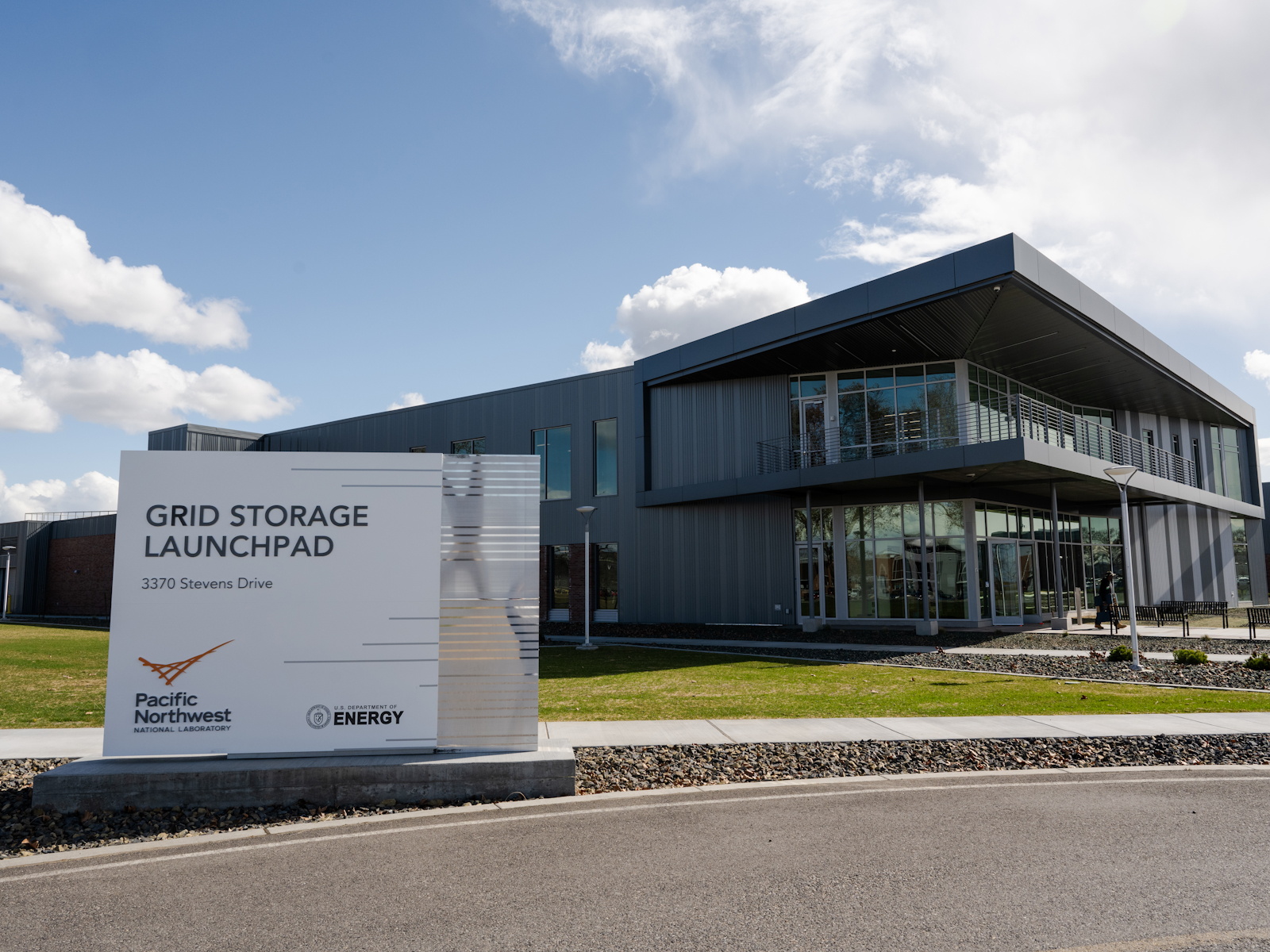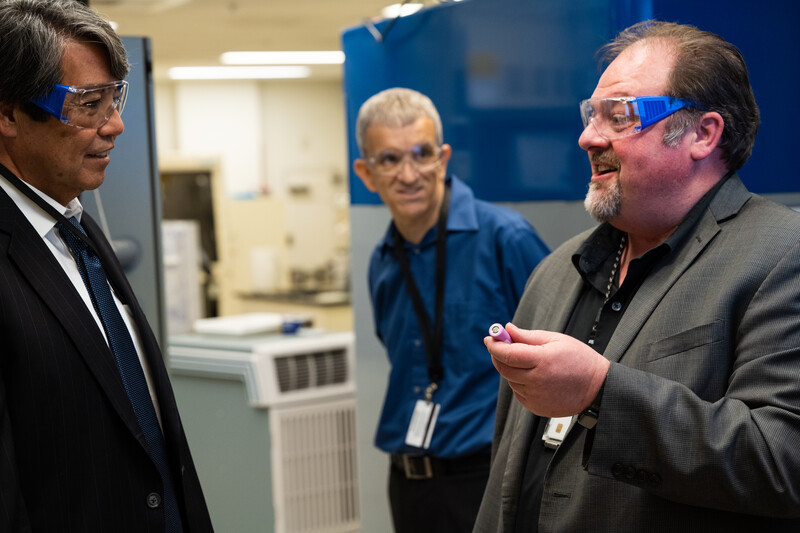Vincent Sprenkle Named Director of Grid Storage Launchpad
Energy storage expert to lead Office of Electricity's first facility to advance next-generation energy storage technologies

Vince Sprenkle, director of the Office of Electricity's Grid Storage Launchpad at Pacific Northwest National Laboratory
(Photo by Andrea Starr | Pacific Northwest National Laboratory)
A nationally recognized leader in electrochemical energy conversion and storage at Pacific Northwest National Laboratory (PNNL), Vince Sprenkle has been chosen to oversee the Grid Storage Launchpad (GSL), a Department of Energy (DOE) Office of Electricity (OE) research and development facility that will open this year on PNNL’s campus in Richland, WA.
For more than a decade, Sprenkle has helped lead the effort to develop and accelerate energy storage technologies to meet the country’s clean energy goals. As director of the GSL, Sprenkle will focus on applying the facility’s cutting-edge capabilities and bringing together research collaborations to help advance grid energy storage solutions to enable the nation’s resilient, reliable, and affordable energy grid.
“We are excited for Vince to lead the Office of Electricity’s Grid Storage Launchpad at PNNL,” said Jud Virden, associate laboratory director of Energy and Environment at PNNL. “His technical expertise in the field combined with his leadership skills will serve as great assets in achieving the GSL’s mission and vision.”
The GSL will bring together researchers from national laboratories and industry partners to develop and deploy energy storage technology that is safer, more cost effective, and durable while developing the next-generation workforce, including skilled labor, first responders and safety officials, utility planners, and regulators.
The OE investment in the GSL complements the Electricity Infrastructure Operations Center, also located at PNNL, which is focused on delivering cutting-edge tools to help understand the real-time operational challenges facing the grid as the nation strives to meet its ambitious clean energy goals. Specifically, GSL will focus on the vital role of energy storage in helping achieve a decarbonized and modern electric grid that benefits everyone.
“It is an honor to lead the Grid Storage Launchpad into the future. I’m excited about the opportunities it will unlock for next-generation grid energy storage technology and the impact that it will have on the future grid,” said Sprenkle. “And I’m equally excited to collaborate with other national laboratories and industry across the country to accelerate the role of energy storage in providing the flexibility required to integrate more renewable resources into the grid and support the electrification of the building and transportation sectors.”
Through independent testing and validation of grid energy storage technologies, the GSL will be used to develop and implement rigorous grid performance standards and requirements that span the entire research and development (R&D) cycle for energy storage.
“Historically, R&D cycles have taken decades to reach commercialization, but when we look at 2035 clean energy goals, we cannot wait that long. This facility is designed to accelerate that process and get technology to maturity faster than ever,” said Sprenkle. “From helping developers with fundamental material science issues to scaling up those materials into functional prototypes and testing and validating their performance under standardized grid operating conditions, people will have the ability to engage GSL in all aspects.”

In addition to his new role at GSL, Sprenkle serves as the co-director of the DOE Energy Storage Grand Challenge Lab Coordinating team, which supports DOE’s crosscutting program to accelerate the development, commercialization, and utilization of next-generation energy storage technologies.
Sprenkle’s 23-year career at PNNL has given him a deep understanding of the current R&D development cycle and ability to recognize the importance of every role in deploying grid storage technology. He holds 32 U.S. patents on fuel cells, batteries, and high-temperature applications. He was named Distinguished Inventor of Battelle in 2017 and PNNL Inventor of the Year in 2014. Recently, he was named as one of Engineering Technology News’s 2023 Rising Stars in Emerging Tech for spearheading the development and deployment of clean energy technologies including battery energy storage, e-mobility, and green hydrogen globally.

The GSL is a $75 million, 93,000 square-foot facility that will foster collaboration between national labs and other stakeholders to support the OE mission, the Energy Storage Grand Challenge, and the Long Duration Storage Shot. Additional funding from the State of Washington, Battelle, and PNNL provided further support for GSL equipment and research and development activities.
Published: March 27, 2024